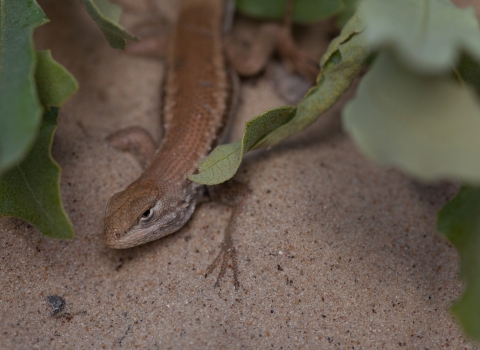DENVER – The U.S. Fish and Wildlife Service, through its Cooperative Recovery Initiative (CRI), is committing $6.86 million to 16 projects across 27 states for recovery of some of the nation’s most at-risk species on or near national wildlife refuges.
“The Fish and Wildlife Service’s Cooperative Recovery Initiative reflects the key role that the National Wildlife Refuge System plays in the conservation and recovery of America’s most at-risk species,” said Service Director Dan Ashe. “This funding not only provides support for innovative projects that directly benefit threatened and endangered species; it also benefits countless other species that share the same habitat. Critically, these projects foster local partnerships and collaboration in conservation projects. That broader community support means a greater chance of success.”
The following projects are receiving funding in the Mountain-Prairie Region:
- Razorback Suckers at Ouray National Wildlife Refuge, UT
This project seeks to enhance the survival rates of razorback suckers (an endangered fish species) in the Green River and nearby wetlands through restoration activities that restore and reconnect habitats at Ouray National Wildlife Refuge. These activities will also benefit other endangered fish such as the bonytail chub and Colorado pikeminnow.
- Lesser Prairie-Chickens at Kirwin and Quivira National Wildlife Refuges, KS
Through enhancements to nesting and rearing habitats, this work will address the primary threat to lesser prairie-chicken recovery: habitat fragmentation. This work, which will take place across more than 14,000 acres on Kirwin and Quivira National Wildlife Refuges, will also benefit endangered whooping crane and least tern populations, and the threatened Arkansas River shiner.
- Bull Trout in the Blackfoot Valley Conservation Area (a conservation easement conservation easement
A conservation easement is a voluntary legal agreement between a landowner and a government agency or qualified conservation organization that restricts the type and amount of development that may take place on a property in the future. Conservation easements aim to protect habitat for birds, fish and other wildlife by limiting residential, industrial or commercial development. Contracts may prohibit alteration of the natural topography, conversion of native grassland to cropland, drainage of wetland and establishment of game farms. Easement land remains in private ownership.
Learn more about conservation easement area under Benton Lake National Wildlife Refuge Complex), MT
In an effort to combat the effects of habitat degradation and climate change climate change
Climate change includes both global warming driven by human-induced emissions of greenhouse gases and the resulting large-scale shifts in weather patterns. Though there have been previous periods of climatic change, since the mid-20th century humans have had an unprecedented impact on Earth's climate system and caused change on a global scale.
Learn more about climate change on threatened bull trout populations, this project will restore high quality habitat and instream flows in Montana’s Blackfoot River watershed. This work will also benefit other native species, including grizzly bears.
- Grizzly Bears at Red Rock Lakes National Wildlife Refuge, MT
Human-related mortalities are the number one cause of death for Yellowstone grizzly bears. This project focuses on conflict resolution, education, and habitat restoration for grizzly bears in the Centennial Valley near Red Rock Lakes National Wildlife Refuge in Southwest Montana.
“Cooperative Recovery Initiative funds are one of our most effective tools for recovering threatened and endangered species on and around National Wildlife Refuges,” said Mountain-Prairie Regional Director Noreen Walsh. “By working cooperatively and leveraging the resources of multiple programs within the U.S. Fish and Wildlife Service, we are able to maximize the power of our limited funding to ensure a sustainable future for the wildlife we manage.”
The Cooperative Recovery Initiative was established in 2013 to restore and recover federally listed species on national wildlife refuges and surrounding lands. It funds on-the-ground conservation projects that provide high conservation benefits.



